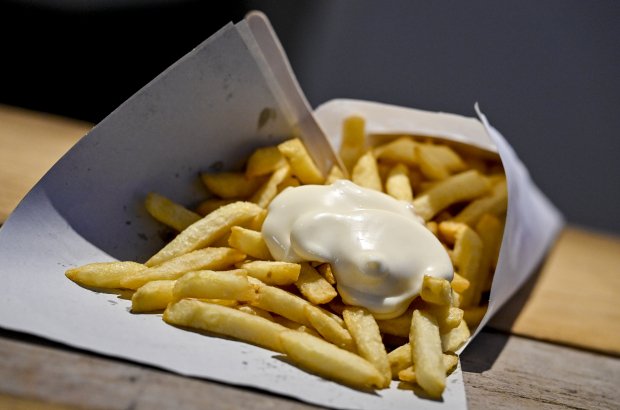- Daily & Weekly newsletters
- Buy & download The Bulletin
- Comment on our articles
Proposal put forward for Brussels' own frites museum
An application for a permit to build a frites museum near the Grand-Place in Brussels has been submitted by the man responsible for the hugely successful version opened in Bruges in 2008.
Eddy Van Belle believes that it makes perfect sense for the capital to have its own frites museum, considering that the one in Bruges is a highlight of the city’s tourism industry and welcomes more than 90,000 visitors each year, outside of Covid periods.
The Musée de la Frite would occupy a three-storey listed building, dating from 1697, at Rue de la Tête d'Or 9, just 50m from the Grand-Place. The building previously housed another of Van Belle’s projects, the Museum of Cocoa and Chocolate, which moved to another address in the city two years ago.
"We thought ‘what are we going to do with this building?’” the promoter said. “We already have 10 chocolate museums around the world. We are not going to create 10 frites museums. Having one in Bruges is good. It is the one and only. But having another one in Brussels make perfect sense."
The new museum in Brussels will be inspired by the museum in Bruges but will be "more digital".
"The initial idea is that visitors come in, take the frite-shaped lift up to the third floor, and then slowly make their way back down, visiting the different exhibition spaces on the way,” Van Belle said. "We will show the origin of the potato, which comes from Peru, we will show machines, the history of the fryer for example, we will show how potatoes were originally peeled and cut - in circles before the long version was imposed.”
A history of sauces is also planned. "Why do we say ketchup? We will explain that it comes from Asia. For mayonnaise, we will explain that it comes from the city of Mahon, in the Balearic Islands." A collection of mustard pots will be presented as well as a collection of photographs of fritkots.
Interactive terminals will be placed in the museum as well as games for children. "For example, we will have a 'potato shooter' to throw ammunition at Colorado beetles that attack the potato," Van Belle added. “We also plan to have a cabaret for children with bags of fries that sing.”
Finally, at the end of the exhibition, there will be a place set aside for tasting. The building in Brussels won’t have as much space for a proper restaurant as is the case in the museum in Bruges, but at the proposed mini-chip shop the public will be able to taste fries prepared from different varieties of potato and in different varieties of fat and vegetable oils.
The man behind the Musée de la Frite hopes to attract between 50,000 and 60,000 visitors per year. "If we can do more, we will be happy,” he said. “But our intention is to complete the choice that exists in Brussels in terms of food museums" with the Chocolate Museum, the future Beer Museum on the Stock Exchange and finally the Frite Museum. "As part of a combined ticket, the visitor could visit all three," Mr Van Belle added.
If all goes well, the Musée de la Frite could open its doors at the end of 2023. "We must be proud of Belgian fries and our culture around French fries,” he said. “The origin of the fries is Belgian, it's not French."
The museum would be the latest step into a bright new future for frites after the first of a new generation of fritkots was inaugurated at Porte d'Anvers in Brussels recently.
The 10m-long food stand with its mirrored façade is one of eight proposed new fritkots to be installed around the city, replacing a number of the shabby, dilapidated ones which have caused complaints in the past. It is hoped that the new fritkots, the result of a design competition launched a few years ago with the objective to breathe new life into the traditional stands, will become as synonymous with Brussels as red telephone boxes are with London.
















